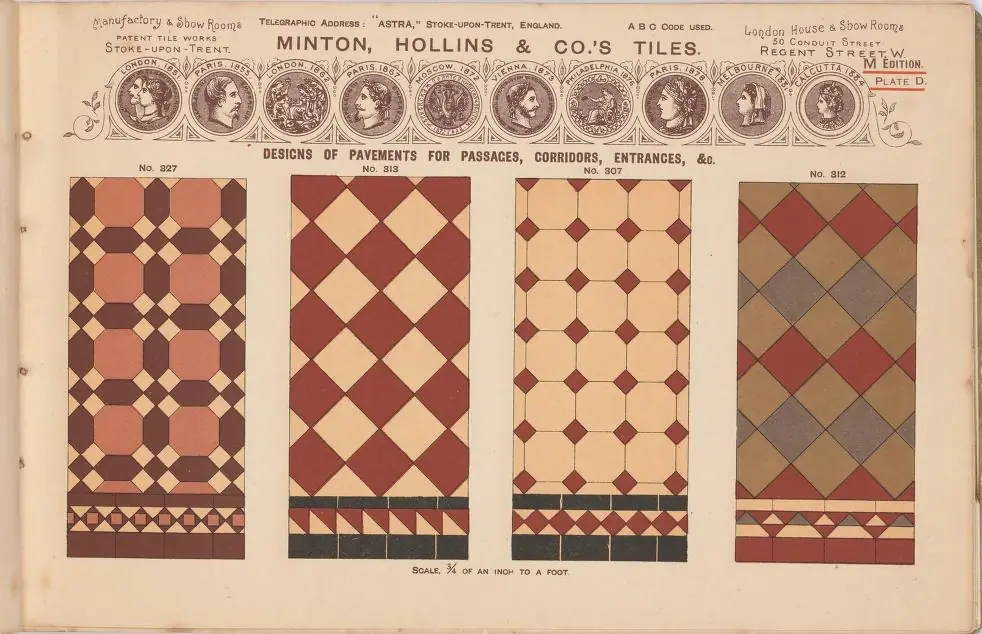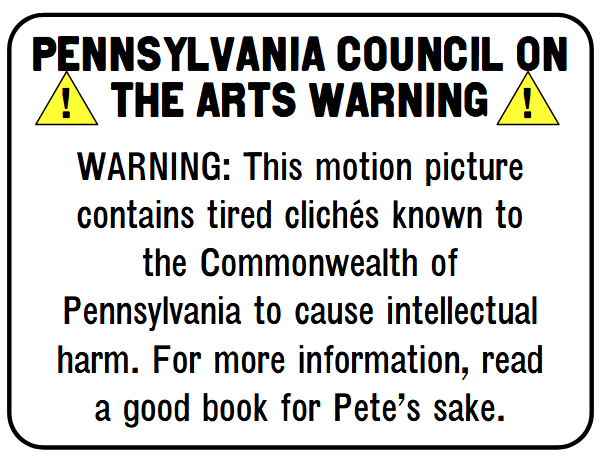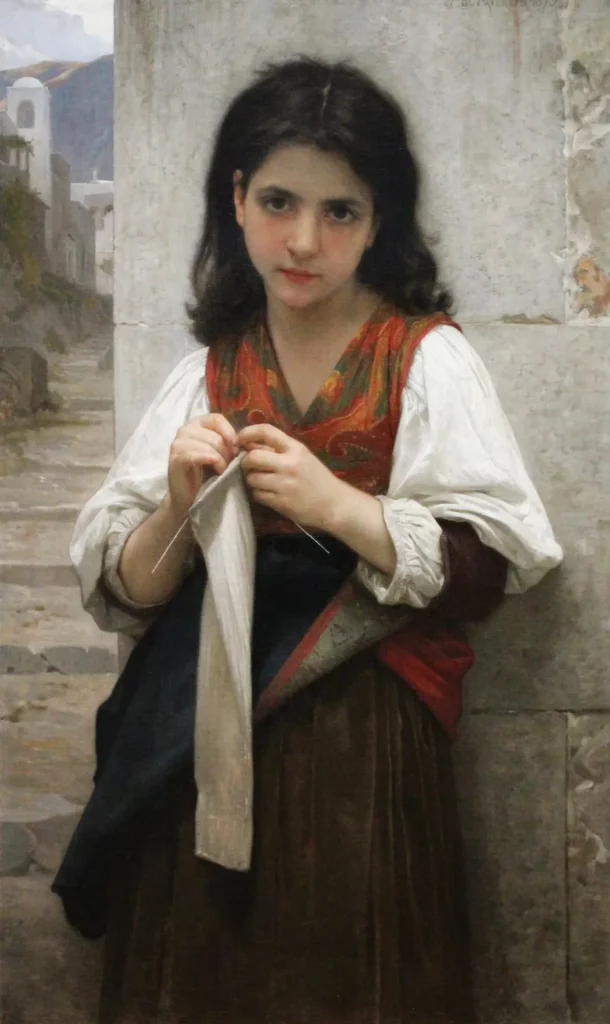Posts filed under “Art”
ASK DR. BOLI.
Our frequent correspondent “Maypo” asked,
What is the good Doctor’s prediction of the timing of when the Carnegie Museum’s patrons lose their collective patience with this nonsense?
Dr. Boli thought this over, possibly for as much as thirty seconds, and came up with the answer he is sure is correct: when it is replaced with a different nonsense.
That is, after all, what has always happened in the past. The discussion came up in the first place because of an abstract expressionist work “of a purely decorative nature” by Virgil Cantini.
Much of abstract expressionism was arguably nonsense, but the whole point of it, and the thing the average yokel objected to, was that it had no message. As much as you could mock abstract expressionism, it trusted the viewer to make an interpretation of the work—or no interpretation, as Cantini apparently believed—from the work itself. Now you can ask what a work means and be given a correct and indisputable answer: “It means we should be aware of the marginalized living among us.” How do you know? “Because it has ‘
But the great wheel keeps turning. There will come a time when art for the sake of message is old-fashioned, and only the yokels and the philistines will come to the museum looking for something with words on it that will tell them what to think. We might suppose that will be a glorious day for art. But it probably will not be. It will probably be the triumph of a different kind of nonsense that we have not been able to predict. But it will displace the nonsense that is current today.
ALL ART IS QUITE USELESS.
According to John H. Smith, manager of the building, the Cantini work will be “toward an abstraction in bronze, glass and steel, of a purely decorative nature.” No story or symbolism will be attempted, he added.
Can you imagine the screaming fits that would ensue today if you asked a professional artist for a work “of a purely decorative nature”? Art is supposed to challenge bourgeois assumptions (the art and academic worlds being the last known habitat of the nearly extinct term “bourgeois”) and show us what’s wrong with the world! You can’t make me do that lowbrow arts-festival trash!
We judge art entirely by its utility today. Do you think Dr. Boli is being too harsh on the art world? Let us look at the descriptions of the four exhibits by living artists currently on display at the Carnegie Museum of Art. You may visit the site and read them for yourself if you like, although you should be warned in advance that the Carnegie Museum of Art has the ugliest Web site in the history of museum Web sites.
For this new body of work, Watt partnered with the Pittsburgh Poetry Collective and Carnegie Museum of Art’s educators in engaging workshops that inspired a list of words in response to Western Pennsylvania’s industrial history and present-day concerns.
You will note that words are an important part of this particular work or set of works. We are not to be trusted with our own interpretation of a visual work; we need words to tell us what is important about it.
How do you see yourself, your body, your views, ideas, and experiences as you move within this museum? I want, I demand, I need, I insist. Andrea Geyer’s Manifest actively acknowledges and embraces the idea that a museum is made of many people: from visitors and staff to artists, we make and remake the museum every single day.
This work is nothing but words. Dr. Boli has made remarks before about works of art that consist entirely of the artist scrawling slogans on a bedsheet, and perhaps some readers thought he was indulging in humorous exaggeration. “I DEMAND THE MUSEUM TO WELCOME MY SMELL MY NOISE MY INADEQUACY AND MY STRUGGLE.” That is the entire text of one of these bedsheet banners, in unadorned black letters. The words are everything; there is nothing else to the art. They are not interesting words. They are not poetic words. They are simply a statement of what the artist thinks is important.
Widening the Lens: Photography, Ecology, and the Contemporary Landscape examines environmental history and degradation, particularly in the American landscape, as well as urgent concerns about climate change, through the camera lens.
Photography is an excellent medium for addressing the problems of modern life; but Dr. Boli would submit that a photograph that needs an introductory statement of principles to be appreciated is not a very good photograph. The curators who mounted the exhibition should have the courage to let the pictures speak, and should stand out of their way while they are speaking.
Launched as a response to the devastation of living reefs due to global warming and ocean acidification, the Crochet Coral Reef resides at the nexus of art, science, and environmentalism.
This is a gorgeous work of art, and it is only a pity that it needs a practical excuse. Furthermore, the excuse dilutes the message. Art that simply celebrates the beauty of the coral reef will make us love that beauty and want to protect it. Art that comes at us with a chip on its shoulder disposes us to place it in a political context of approval or disapproval before we have even seen the art.
Dr. Boli will make a prediction that will make him anathema in the art community: not a single one of these exhibits will fix what’s wrong with the world. But though Virgil Cantini is not Dr. Boli’s favorite Pittsburgh sculptor, he did make the world better, because he made spaces more beautiful. To increase human happiness is the only way to save the world. The only way art can increase human happiness is through beauty, and it is time for us to disclaim any other purpose for it. It is time for us to stand with Oscar Wilde and say, “
WALLPAPER.
Are you a graphic designer looking for ideas for repeating patterns?
Are you a website owner looking for a colorful background to show off your questionable taste in design?
Are you an interior decorator curious about those barbarous days when interiors admitted other colors than beige and off-white?
Are you just nebby?
No matter which of those categories you fall into (and if you fall into none of the others, you surely must fall into the last), you will want to take a look at the latest page in the Eclectic Library, where we have assembled a large collection of catalogues and sample books of wallpaper. This is your chance to catch a glimpse of an alternate universe in which interiors need not be decorated in neutral colors. Spend an hour among these pictures, and your everyday world will seem joyless and drab. But rejoice! You can do something about that! A can of paint, a bucket of paste, and a few rolls of wallpaper can place you among the Edwardian gentility.
WARNING LABEL.
ASK DR. BOLI.
Dear Dr. Boli: Why is there fashion? —Sincerely, Naomi Campbell.
Dear Madam: Fashion exists so that we will throw away our clothes before we have a chance to complain about how shoddily they are made.
Dr. Boli does not participate in fashion. He stopped buying suits in 1874. Up to that point, he had bought only the best suits from the best tailors, and they wear well. He is running low on collars, however, and finding them hard to replace, since, contrary to his expectations, the fad for shirts with collars sewn on seems to have some lasting power.
ASK DR. BOLI.
Dear Dr. Boli: I saw this terra-cotta ornament on an old school on Neville Island, and I wondered whether you, with your iconographical expertise, could explain the symbolism to me. —Sincerely, A Pedestrian.
Dear Sir or Madam: With pleasure. This image, commonly employed at the entrance to a school, represents the torch of learning and the book of fire-safety protocols.
IN A HYPOTHETICAL VIDEO GAME…

…this is the monster that eats you if you make a wrong turn in the maze.
Coraopolis Methodist Episcopal Church, 1924, architects T. B. & Lawrence Wolfe. Photograph by Father Pitt.
ONE COMPLETE ORBIT OF THE ART WORLD.
Yet once in a while Dr. Boli has an experience that makes the circular motion of the earth strangely evident. One of those happened yesterday, thanks to William-Adolphe Bouguereau, the notable French painter. That we are able to call him notable is the thing that makes us feel the movement of the earth.
This curious mental journey began when Dr. Boli remembered visiting an art museum in Ocala, Florida, some years ago, shortly after it was opened. What was the name of the museum? He could not recall; but he could recall that it was on Silver Springs Boulevard east of the city. Google Maps did the rest; the museum was the Appleton Museum of Art, founded to display the collection of a rich fellow named Appleton, who snatched up a wide variety of art, including a first-class collection of Asian art and an important collection of pre-Columbian American art, but also some European masters. (And he also got his hands on the desk on which the Treaty of Versailles, the one that ended the First World War, was signed, because, you know, somebody has to own it.)
The museum site divides the permanent collection into several categories, and the painting chosen to represent the “European” category (the painting you see above) immediately struck Dr. Boli as a Bouguereau. If you know Bouguereau’s work, you know why: the idealized and impossibly clean poor girl staring straight at us is just his sort of thing. That first instinct was right: it was Tricoteuse (“Knitter”) by William-Adolphe Bouguereau.
In his lifetime, which ended in 1905 at a good old age, Bouguereau was the most notable of all living artists. Dr. Boli remembered when his paintings were eagerly absorbed by European aristocrats and American millionaires as fast as M. Bouguereau could turn them out. To own a Bouguereau was the infallible sign that you were a collector of taste and discrimination.
Then Bouguereau died, and within a dizzyingly short time, his reputation plummeted into the gutter. To own a Bouguereau was the infallible sign that you were a philistine. For almost the whole twentieth century, to admit to liking Bouguereau was a gaucherie from which one’s reputation as a connoisseur could never recover. When the Appleton Museum of Art opened in 1987, advertising the museum’s collection of European art with a Bouguereau would have been like advertising the museum’s collection of American art with a painting of Elvis on black velvet. You could have bought that Bouguereau in a flea market for fifteen dollars and a book of S&H Green Stamps. Now it is probably worth hundreds of thousands, if not millions.
The world has spun in a circle.
What does this observation mean? It means either that the art world has come to a cheering and long-deserved appreciation of the skill and talent of the best French Academic painters, or that you should be scouring flea markets for paintings of Elvis on black velvet.
ASK DR. BOLI.
This was an interesting question, because Dr. Boli did not know the answer—or at least he did not know the whole answer. Part of the answer was easy. The patterns are not randomly generated: they come from various old books and catalogues. They do often repeat, but you would need a very good memory to recall one specific marbled endpaper.
But to the question of how many there are Dr. Boli did not know the answer, so he set his secretary to counting. Here is the census of backgrounds:
77 marbled endpapers
72 tile patterns from various tile manufacturers
48 miscellaneous other backgrounds (such as wallpaper patterns, cloth bindings, fabric prints, and so on)
That makes a total of 197 different backgrounds so far, which is enough for a pleasing variety. The collection grows every time we find something in an old book or catalogue that would make a suitable background.
The resources for building a collection are readily available. Old books at the Internet Archive commonly have marbled endpapers. Catalogues from tile and wallpaper manufacturers are full of patterns.

And, by the way, none of the patterns on this page are in Dr. Boli’s collection yet. It will take a while longer to exhaust the inexhaustible riches of the Internet Archive.
It takes a little practice to crop one of these patterns so that it repeats correctly—perhaps five minutes or so of practice.

Marbled endpapers, of course, cannot be tiled so neatly, but the complex ones are random enough that the seams are not offensive. In that sense, the marble patterns do in fact come from a random generator—namely, the constantly swirling colors on which the paper was laid.





